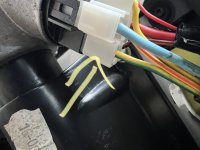Hello all, I have a 1999 Fiat Ducato 1.9 TD (Motor Home) and the Alternator is overcharging the battery. Does anyone know of a good "vintage" parts dealer as I am struggling to find one online?
This issue, causes the battery warning light to come on and when it's on all the electrics (Indicators specifically) stop working. Stop the Van and everything is fine as the battery is not being overcharged.
My local garage has had 3 alternators delivered for a 1.9 TD but they are all wrong with the wrong measurement for the mounts and whilst they are looking I wondered if the community had any recommendations.
Otherwise, we might have to go down the refurb route which could be costly.
Thank you in advance.
John
This issue, causes the battery warning light to come on and when it's on all the electrics (Indicators specifically) stop working. Stop the Van and everything is fine as the battery is not being overcharged.
My local garage has had 3 alternators delivered for a 1.9 TD but they are all wrong with the wrong measurement for the mounts and whilst they are looking I wondered if the community had any recommendations.
Otherwise, we might have to go down the refurb route which could be costly.
Thank you in advance.
John



